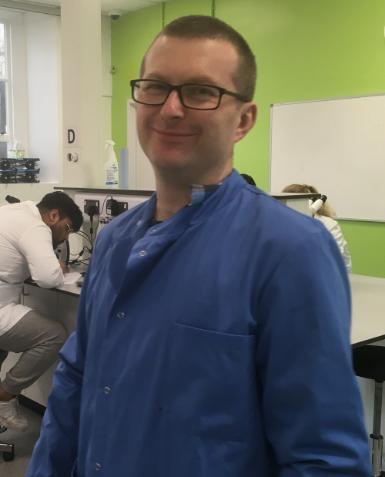Introducing Dr Mick Craig
Published: 24 January 2020
Dr Michael T Craig, Senior Lecturer, Institute of Neuroscience & Psychology
Introducing Dr Mick Craig

Background
My science career started right here at the University of Glasgow, where I obtained an undergraduate neuroscience MSci in 2006. I moved to Oxford for postgraduate research, working in the groups of Ole Paulsen and Louise Upton on a Wellcome-funded programme. After receiving my DPhil in 2011, I did a brief postdoc in Ole’s new lab in Cambridge before heading to NIH, near Washington DC, to take up a postdoctoral visiting fellowship in the group of Chris McBain. I returned to the UK in early 2016 to take up a fellowship at the University of Exeter to launch my own research programme, studying various aspects of neural circuit function in health and disease. My career has now gone full-circle, with me beginning a Senior Lecturer position in the Institute of Neuroscience of Psychology in January. To say that I am excited about bringing my research back to my home city, and working in the department that trained me, would be an understatement of epic proportions!
Research Programme
My research programme aims to address two interlinked questions: how do different regions of the brain communicate and synchronise their activity across long distances, and what are the cellular mechanisms underlying rhythmic network activity? We focus on the Papez circuit: an interconnected network of brain regions, including hippocampus and prefrontal cortex, that support memory and decision-making. One of my key focuses has been on how midline thalamic nuclei can act as a hub to mediate communication throughout the Papez circuit. My group is pursuing a number of projects on this theme, spanning ex vivo electrophysiological and optogenetic circuit-mapping of connectivity, through to in vivo electrophysiological and behavioural studies using manipulations of circuit function in models of dementia and psychiatric illness. We are particularly interested in Alzheimer’s disease and Dementia with Lewy Bodies, and copy number variations (CNVs) that increase the likelihood of developing autistic spectrum disorder or schizophrenia.
Life outside of the lab
Aside from spending time with my wife Dominique and two kids, Théo (5) and Élise (1), I’m at my happiest cooking or baking in the kitchen, or running long distances in an attempt to offset time spent in the kitchen.
First published: 24 January 2020

